Sonos Trueplay: What is it? How can you use it?
Sonos's audio calibration technology aims to tune your Sonos system to your room to deliver the best possible sound.
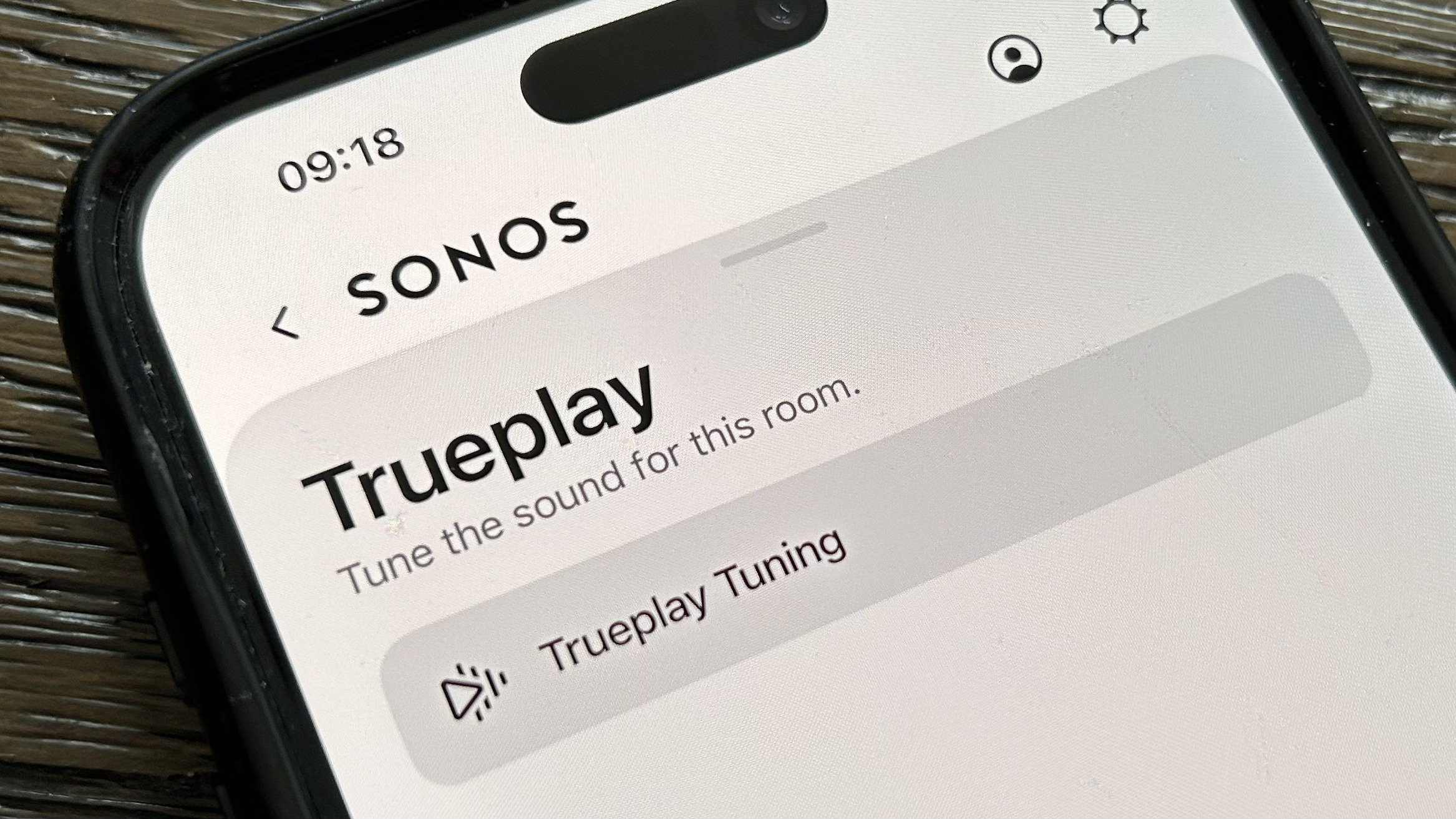
For many modern households, the perfect room for audio simply doesn’t exist. Unless you’re in the lucky position to be able to have a dedicated listening room that you can treat accordingly, the likelihood is that your audio products are going to have to fit in to your home’s space and not the other way around.
The problem is, the impact of your room’s layout and where you place your speaker can have a huge impact on the sound you hear. Thankfully, Sonos speakers and soundbars have a built-in calibration tool to help them always sound the best they can, and it’s called Trueplay.
First announced in 2015, it's now a staple across the entire Sonos product range, and is well worth knowing about if you own, or plan to buy, any Sonos products. Read on for everything you need to know.
What is Trueplay?
Sonos Trueplay will automatically calibrate your speaker and optimise it for its surroundings. Sonos says that too often it has found consumers with their speaker placed in less-than-ideal settings – tucked in a corner, placed on the floor or just put in a room that’s not great acoustically.
These are all scenarios that Sonos wants to help to improve with its Trueplay technology. Sonos says users shouldn’t have to have any knowledge of good speaker placement in order to get the most of their Sonos product – they should be able to put it wherever is convenient and still get great sound.
And this applies to both individual Sonos speakers and Sonos home theatre setups, all of which can benefit from Trueplay tuning.
Which Sonos products are compatible?
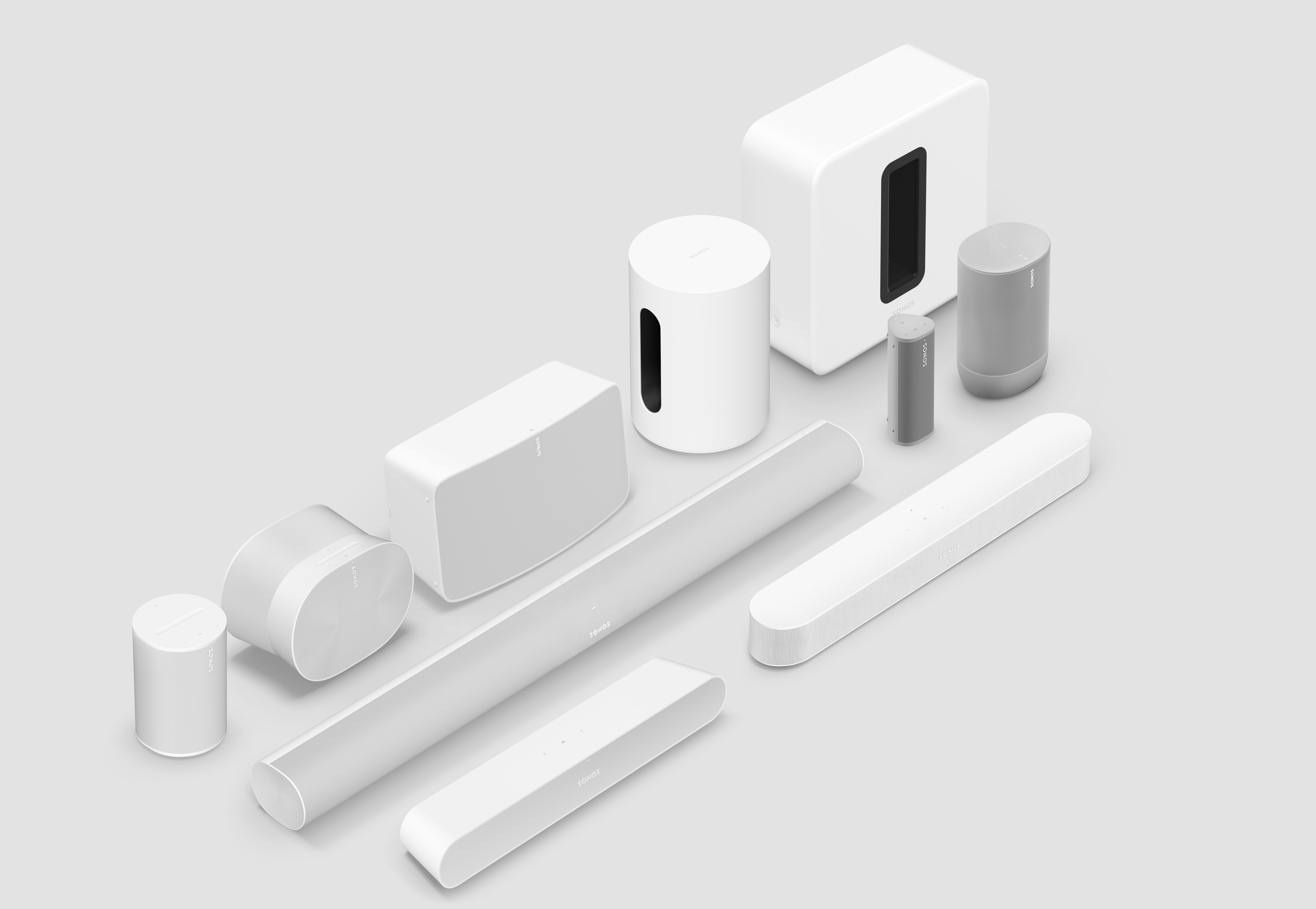
Trueplay will work with all of Sonos’ smart speakers. That means the new Era 300 and Era 100, the Sonos One, One SL and Sonos Five, and even the older Play:1, Play:3, and both generations of Play:5. It's also present in all of the more recent soundbars (Arc, Beam, Beam Gen 2, and Ray) as well as the older Playbar and Playbase. And since 2019, an updated version of it also works with Sonos's portable speakers, Move and Roam (but not the Roam SL).
The latest hi-fi, home cinema and tech news, reviews, buying advice and deals, direct to your inbox.
Alongside your Sonos speaker(s), you’ll need a compatible iOS device to do the measuring, like an iPhone, iPad or iPod Touch. It will need to be running iOS 16/iPadOS 16 or above and have the Sonos app installed, though there are a couple of devices that aren't supported. They are:
- iPod touch (7th generation)
- iPad Pro 11-inch (2nd, 3rd, 4th generation)
- iPad Pro 12.9-inch (4th, 5th, 6th generation)
- iPad (10th generation)
What about Android, we hear you cry. For a long time, Android users were flat out of luck when it came to Trueplay. Sonos put this down to the discrepancies in microphone performance across Android phone manufacturers – and apparently even the same phone on different networks.
In 2024, that's still largely the case, unless you have either the Era 100 or Era 300 speakers. If you do, you can use their quick-tuning feature to adjust their sound, made possible by the Eras' built-in microphones. But if you have older speakers you're still out of luck.
It's worth remembering that you only need the iOS device to run the Trueplay process, and after that you can continue to control it with your Android device. If you can get your hands on a compatible iPhone or iPad from a friend or family member, it might be worth considering so you can ensure your speakers are sounding their very best.
How does Trueplay work?
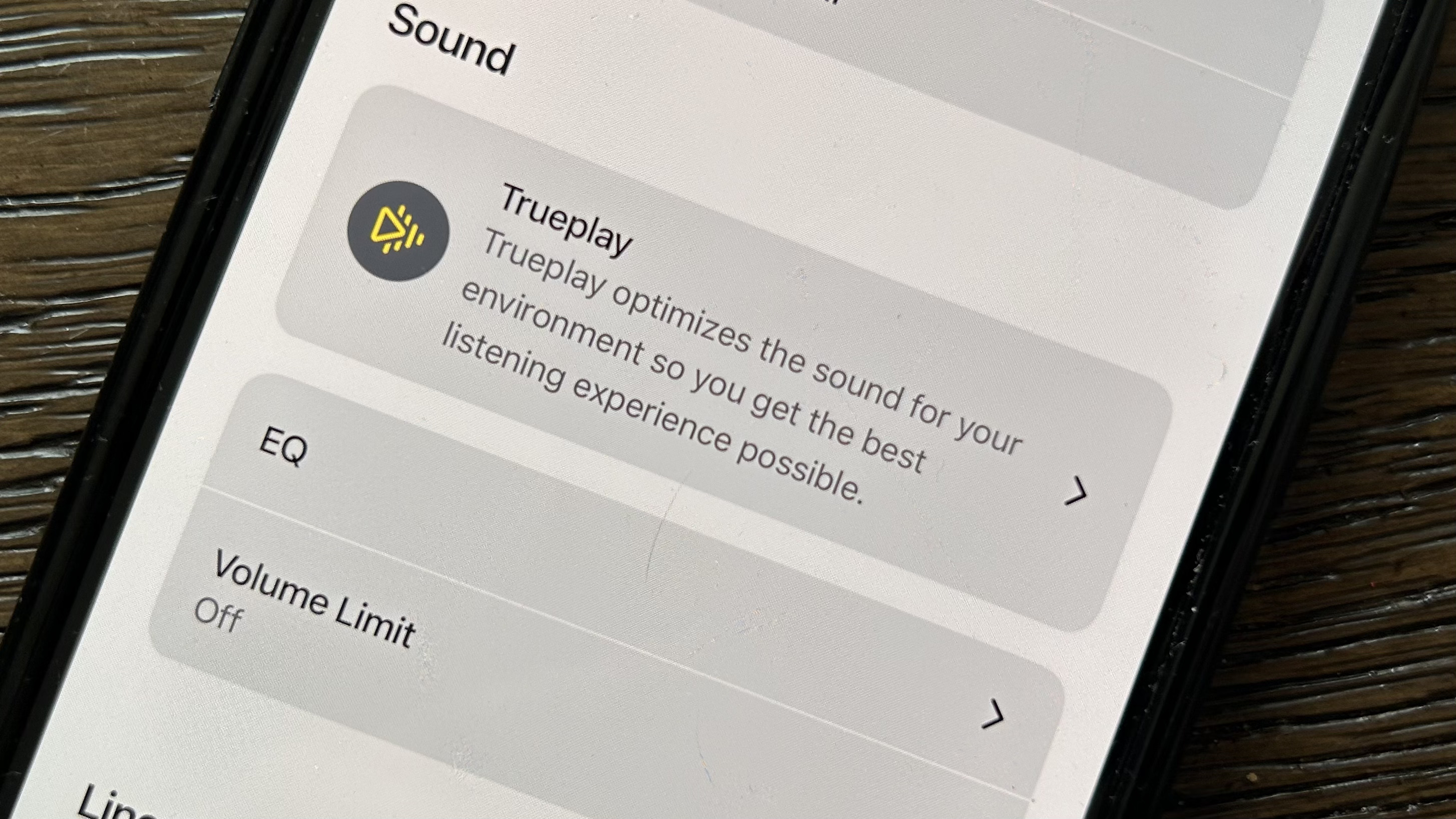
Sonos says each speaker that is shipped is expertly tuned to deliver music as close as possible to how the artist intended. Trueplay is listening for any alterations to the sound, so it can correct it.
It does this by having your speaker emit a series of tones and sweeps across the frequency range, with the microphone on your device recording the results. It isn’t mapping your room like an AV receiver might do during calibration, but instead listening to soundwaves and the way they behave and bounce around a room.
It listens to lots of cross-sections across the frequency range, taking an accurate map of the frequency shifts in the room and making any necessary changes in what Sonos says is a very precise way.
For example, if your speaker is in a room with a lot of glass, high frequencies won’t die away as quickly, while a speaker tucked in a corner might find its lower frequencies are amplified. Trueplay’s job is to balance this out.
With Sonos' portable speakers, Auto Trueplay tuning was introduced because they will likely be placed on different surfaces and in different environments regularly, so its sound can't simply be tailored for one scenario. With Auto Trueplay, it's the Move or Roam speaker itself that carries out the measuring and self-calibration – not your device. It uses its microphones to measure the frequency response of its surroundings in a similar way that Apple's HomePod 2 adjusts its sound to its environment.
How do you set up Trueplay?
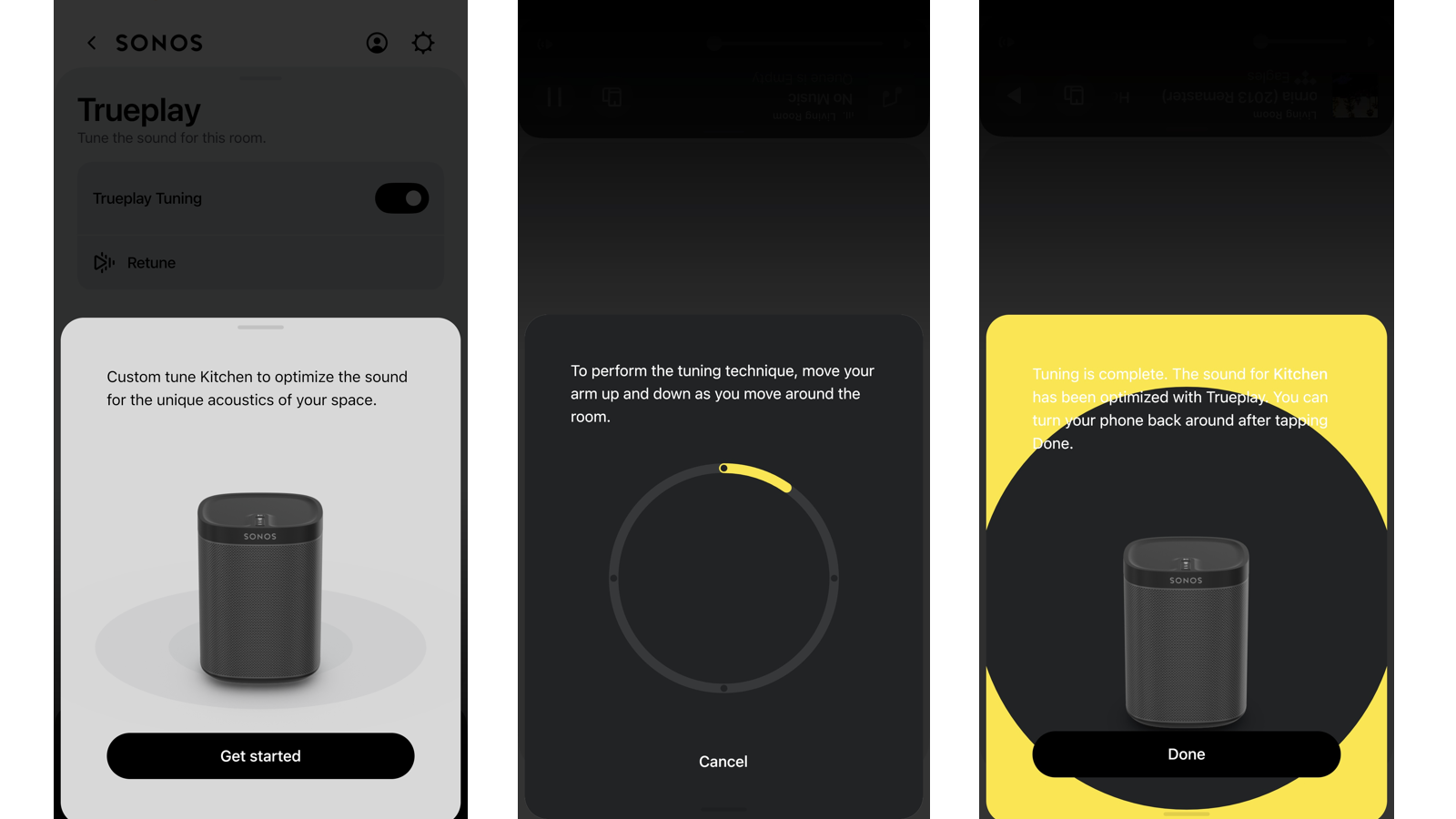
Trueplay is built into the Sonos control app. Make sure you have the latest version of the app before you calibrate your speakers, and that the speaker/soundbar is connected to the wi-fi and is set up in the app.
To find Trueplay, you'll want to go into your System Settings (the cog in the right-hand corner) and then into each room – if you have a stereo pair or home theatre setup, all speakers will be tested as one. Trueplay is found here under the Sound heading.
In all, it takes about three minutes the first time, due in part to the fact you have to watch the demo video in full, and then around a minute or so for each additional speaker.
Firstly, your environment will be tested to make sure it is quiet enough, and once you’ve got the all clear, the test tones will sound. During this time you’ll need to walk around your room, slowly moving your iOS device up and down through the air. You might look a bit daft, but it’s important to keep moving, with a slight concentration on any specific listening areas you might have in the room.
The app does a good job of prompting you if you’re doing things wrong though, and will tell you if you need to move around more, or move the device faster or slower.
As long as your environment manages to stay reasonably quiet during the 45-second process, Trueplay should be successful, though there has been some clever tech built into it to take account for normal household noises. For example, there’s an algorithm designed to specifically cancel out dog barking. Clever stuff.
You'll only have to perform the Trueplay procedure once per speaker, but if you reposition your speaker into a horizontal or vertical position, or move it to a different room, you should of course retune it for its new situation.
Soundbars will have one extra step before you get to this, which is to calibrate the sound to your main listening position first. You'll just have to sit where you would normally to watch TV, hold your device at eye level and wait for the test tones to sound – which lasts about 45 seconds. Then you go onto the wider room testing as above.
In Auto Trueplay tuning with portable speakers, the procedure is triggered whenever the Move or Roam is placed in a new location. It takes around 30 seconds to process its new surroundings, and Sonos says it continuously refines the sound when the speaker is stationary too.
In the new version for Android users, they can select the "Quick Tuning" option on the Sonos app when relying on the Era speakers' mics to calibrate. The traditional method is referred to as Advanced Tuning for iOS devices.
What differences will I hear?
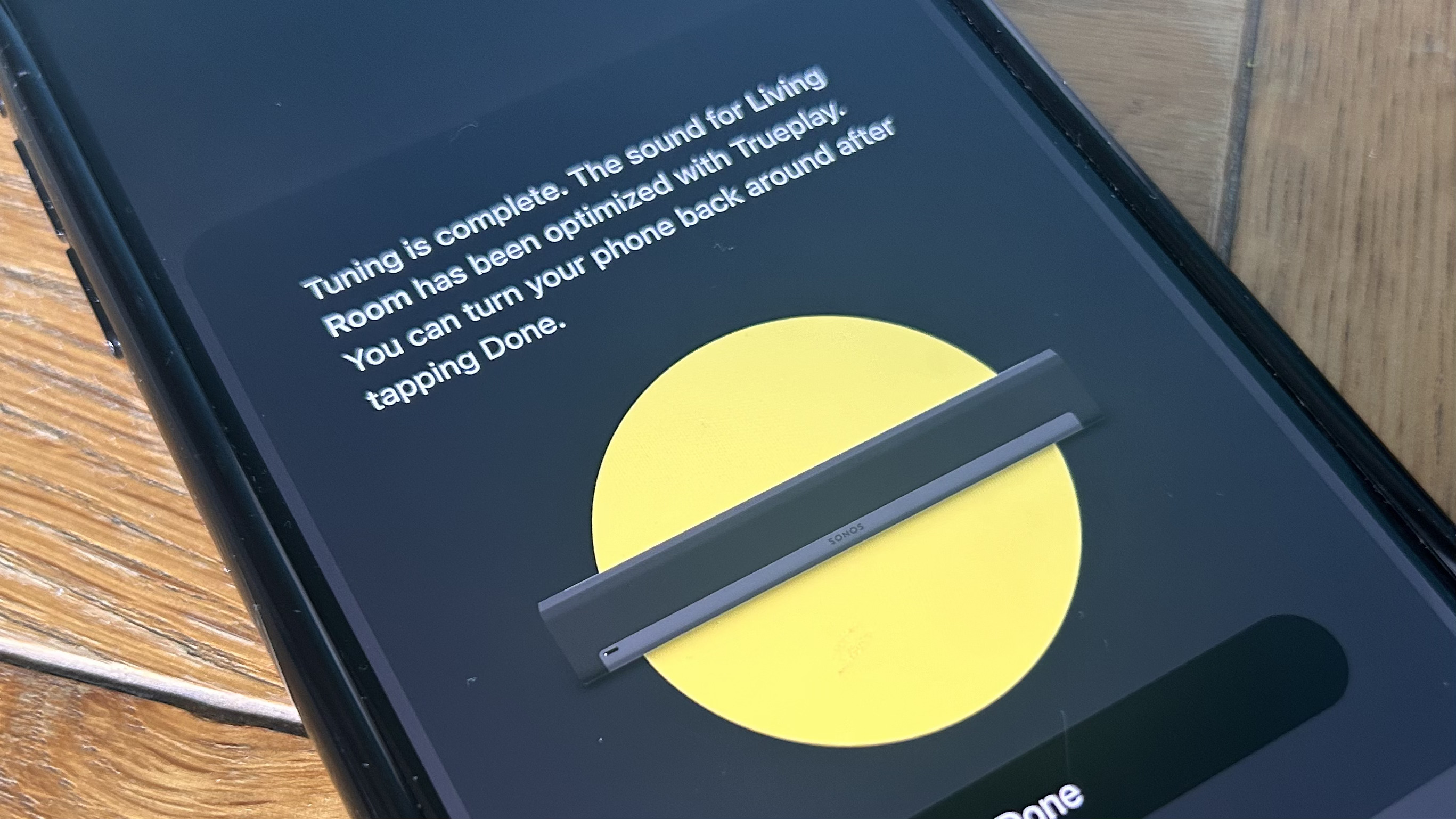
If your speaker is in a good place, you might not hear any changes in sound whatsoever. During the beta process, Sonos said around 50% of speakers saw a change. In our testing over the years with every compatible Sonos product, we found it to be very effective, with the sonic differences obvious to our ears, depending on where the speaker is placed.
When listening to the mains-powered speakers in our dedicated listening room, it does little to the sound. But move the speaker to a less ideal location – a kitchen or a corner for example – and the difference is audible. It tightens up any boomy bass, adds clarity to the midrange and really cleans up the sound from top to bottom. We said "it opens the sound up" in the Sonos One review, and that's still accurate.
With portable speakers, we move from our soundproofed test room to a noisy office environment and outdoors. The speaker’s real-world transformation is audible; when outside, there’s a definite sense of the Move’s sonic presentation becoming more open, while retaining the clarity and balance of its indoor performance.
After completing the calibration, Trueplay will let you know whether it’s made any tweaks or not, also letting you know whether they were big or minimal.
If you don’t like the changes, you have the option to switch off Trueplay (which also doubles as an easy way to do a quick A/B listen), with EQ settings still available after the process has finished should you wish to make further changes yourself.
What's the future for Trueplay?

Sonos called Trueplay more of a strategy than a feature, with its launch in 2015 billed as the first phase in a timeline it sees stretching 10 or 15 years.
It's safe to say it has become as familiar a Sonos feature as the wi-fi connection. Since launch, we've seen Trueplay included in pretty much every major Sonos speaker product. It's been updated for portable use, adapted for Android users and even has the ability to fine-tune multi-speaker Sonos home cinema setups.
And most of all, it's effective. We can only hope for more accurate, fine-tuned advancements for future products, and a wider compatibility for Android users soon.
MORE:
Read our Sonos Era 300 review
Which Sonos speaker should you buy in 2024?
Sonos - everything you need to know
Check out our first impressions of the Sonos Ace wireless headphones
Verity is a freelance technology journalist and former Multimedia Editor at What Hi-Fi?.
Having chalked up more than 15 years in the industry, she has covered the highs and lows across the breadth of consumer tech, sometimes travelling to the other side of the world to do so. With a specialism in audio and TV, however, it means she's managed to spend a lot of time watching films and listening to music in the name of "work".
You'll occasionally catch her on BBC Radio commenting on the latest tech news stories, and always find her in the living room, tweaking terrible TV settings at parties.
- Kashfia KabirHi-Fi and Audio Editor

